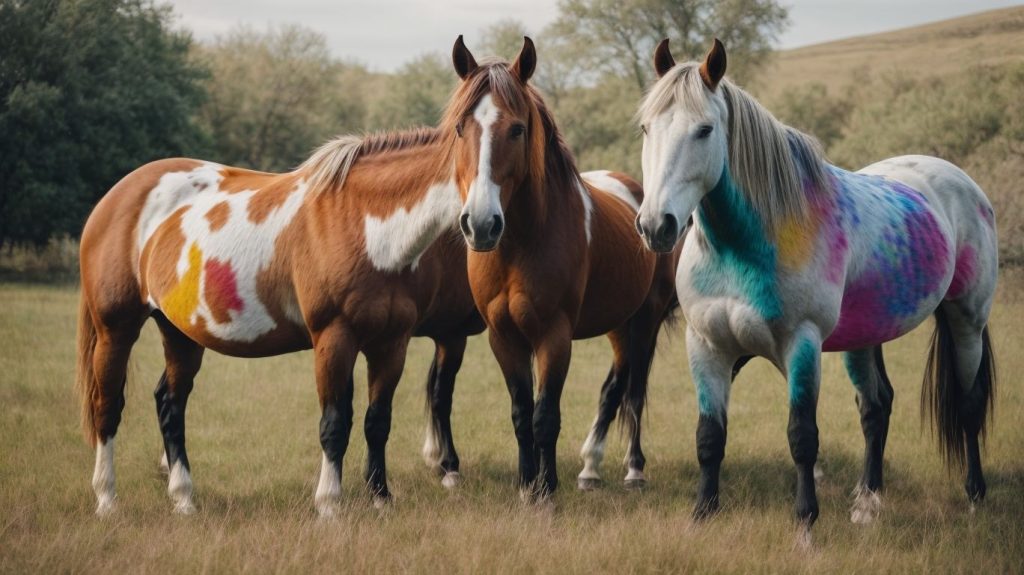In the world of equine enthusiasts, the choice between Paint and Hanoverian horses is a pivotal decision. Both breeds have their own distinct characteristics and purposes, making it essential for prospective owners to understand the differences and similarities between the two.
From their physical attributes to their temperaments and uses, this article will delve into the nuances of these popular horse breeds, aiming to provide a comprehensive comparison that aids in making an informed decision. Whether you’re a seasoned equestrian or a curious newcomer to the world of horses, this piece aims to offer valuable insights into the unique qualities of Paint and Hanoverian horses, ultimately helping you determine which breed aligns best with your needs and preferences.
Key Takeaways:
What are the Differences Between Paint and Hanoverian Horses?

Credits: Horselife.Org – William Carter
The differences between Paint and Hanoverian horses encompass distinct characteristics, breeding histories, and utilization in equestrian disciplines.
Paint horses, known for their distinct coat patterns and coloration, have a diverse genetic background that includes the bloodlines of various horse breeds, such as Quarter Horses and Thoroughbreds. Their origins trace back to the United States, where they were bred for versatility and performance in various equestrian activities, such as rodeo events and ranch work.
On the other hand, Hanoverian horses, originating from Germany, are renowned for their elegant appearance, exceptional athleticism, and versatility. Bred specifically for dressage, show jumping, and eventing, Hanoverians are characterized by their powerful hindquarters, graceful movement, and graceful appearance, making them highly sought after in competitive equestrian sports worldwide.
What is a Paint Horse?
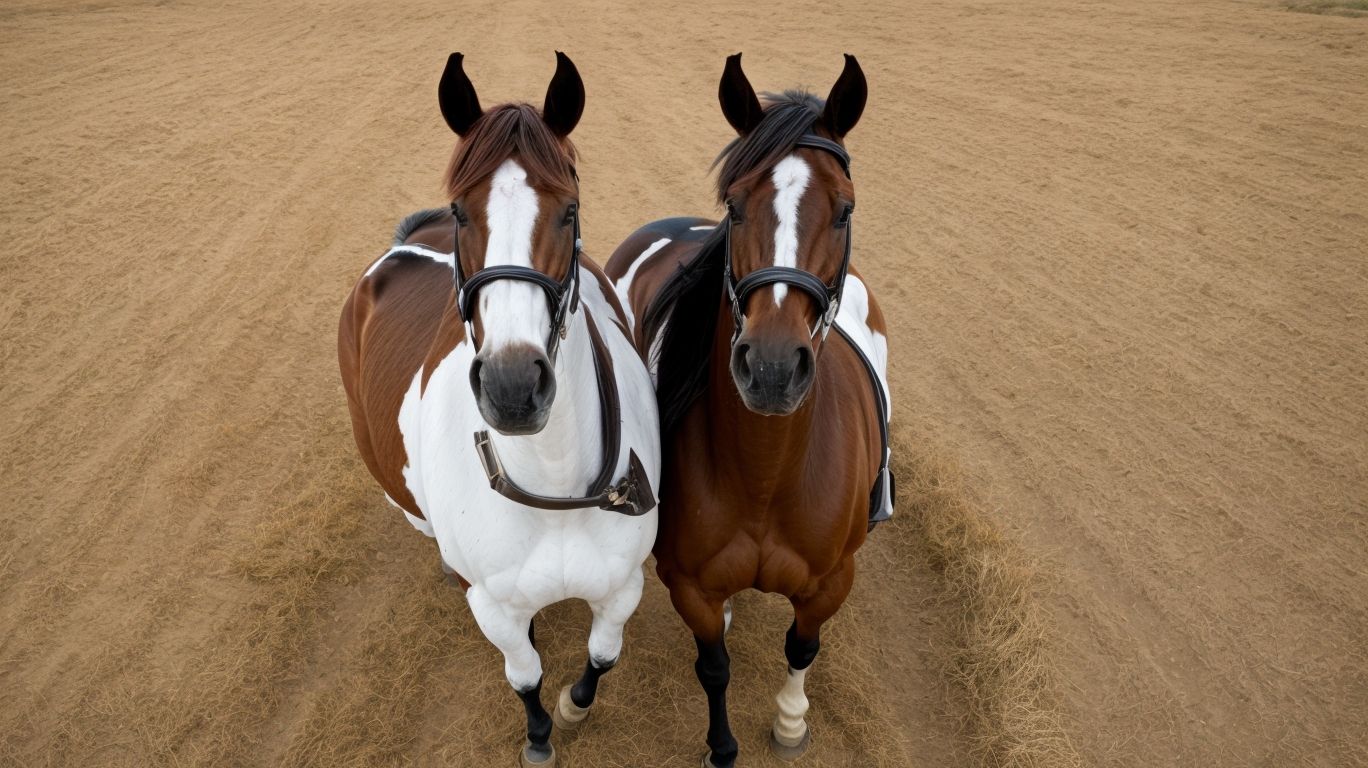
Credits: Horselife.Org – Steven Wilson
The Paint Horse, known for its distinctive coat patterns and versatile nature, is a popular breed in the equestrian community, valued for its athleticism and even temperament.
Paint Horses are well-regarded for their unique coat patterns, often displaying a combination of white and another color such as black, bay, sorrel, or chestnut. Their striking appearance and agreeable disposition make them sought after for both pleasure riding and competitive events.
Plus their appealing appearance, Paint Horses are known for their athleticism and suitability for various riding disciplines, including western pleasure, trail riding, ranch work, and even dressage. Their adaptability and willingness to work make them popular among riders of all levels of experience.
It is interesting to note that the Paint Horse is closely associated with the American Paint Horse Association (APHA), a leading organization dedicated to the promotion and preservation of this exceptional breed. Their stringent registration requirements ensure the preservation of the breed’s distinctive characteristics and bloodlines.
What are the Characteristics of a Paint Horse?
Paint Horses are recognized for their exceptional athletic ability, versatile nature, and even-tempered temperament, making them well-suited for various riding disciplines and activities.
Their distinctive coat patterns, characterized by large patches of white and another color, also contribute to their popularity.
A Paint Horse’s conformation is well-suited for agility and strength, ideal for activities such as barrel racing, reining, and cutting. Their gentle nature makes them suitable for riders of all levels, including children and novice adults. Their adaptability and trainability make them valuable assets in both western and English riding. The combination of these attributes has propelled Paint Horses to prominence in many equestrian disciplines.
What are the Uses of a Paint Horse?
Paint Horses excel in a wide range of equestrian pursuits, including riding, show jumping, dressage, and competitive events, showcasing their adaptability and performance capabilities.
Their striking coat patterns and athletic build make them a popular choice for riders seeking a versatile and visually stunning partner. Their agility and strength make them exceptionally well-suited for show jumping, where precision and speed are essential. In dressage, their natural grace and fluid movement allow them to master the intricate maneuvers and patterns required at the highest levels of competition. Their exceptional athleticism and cooperative nature make them highly sought after in various competitive events, such as reining, cutting, and barrel racing.
What is a Hanoverian Horse?
The Hanoverian horse, originating from Germany, is a renowned warmblood breed highly esteemed for its exceptional athleticism, versatile nature, and refined conformation.
Belonging to the warmblood group, the Hanoverian breed has a strong foundation in German equestrian history. Not only are they known for their performance in dressage, show jumping, and eventing, but they also possess a gentle temperament, making them suitable for riders of all levels.
The roots of the Hanoverian horse trace back to the 18th century when great emphasis was placed on breeding horses suitable for cavalry and agricultural work. Over time, this selective breeding resulted in a horse known for its strength, agility, and graceful movements.
In America, the Hanoverian breed has gained prominence, largely owing to the efforts of the American Hanoverian Society, dedicated to the careful breeding, registration, and promotion of these magnificent animals. The society plays a vital role in preserving the breed’s heritage and ensuring high breeding standards for future generations.
What are the Characteristics of a Hanoverian Horse?
Hanoverian horses are coveted for their exceptional jumping and dressage skills, making them formidable competitors in the equestrian world. Their agile and powerful build allows them to excel in a variety of disciplines, from show jumping to eventing, and their calm demeanor underlines their suitability for riders of all levels. The breed’s strong, well-defined conformation, with a harmonious blend of strength and elegance, is a testament to the careful breeding selection that has shaped their physical attributes. These traits have cemented the Hanoverian horse’s reputation as a top choice for riders seeking a talented and reliable equine partner.
Hanoverian horses are coveted for their exceptional jumping and dressage skills, making them formidable competitors in the equestrian world. Their agile and powerful build allows them to excel in a variety of disciplines, from show jumping to eventing, and their calm demeanor underlines their suitability for riders of all levels. The breed’s strong, well-defined conformation, with a harmonious blend of strength and elegance, is a testament to the careful breeding selection that has shaped their physical attributes. These traits have cemented the Hanoverian horse’s reputation as a top choice for riders seeking a talented and reliable equine partner.
What are the Uses of a Hanoverian Horse?
Hanoverian horses excel in various equestrian pursuits, demonstrating outstanding performance in riding, dressage, and competitive events, establishing their reputation as versatile and accomplished athletes.
Their remarkable athleticism and elegant movement make them highly sought-after for dressage competitions, where their grace and obedience elevate the presentation of complex maneuvers. In riding, their powerful, yet supple gaits provide a smooth and responsive ride, making them ideal mounts for leisure riders and competitive equestrians alike. Their exceptional jumping ability is showcased in show jumping and eventing, where they display a combination of agility and strength. These versatile qualities make Hanoverian horses prized assets in various equestrian disciplines, underscoring their enduring legacy in the world of equine sports.
What are the Similarities between Paint and Hanoverian Horses?
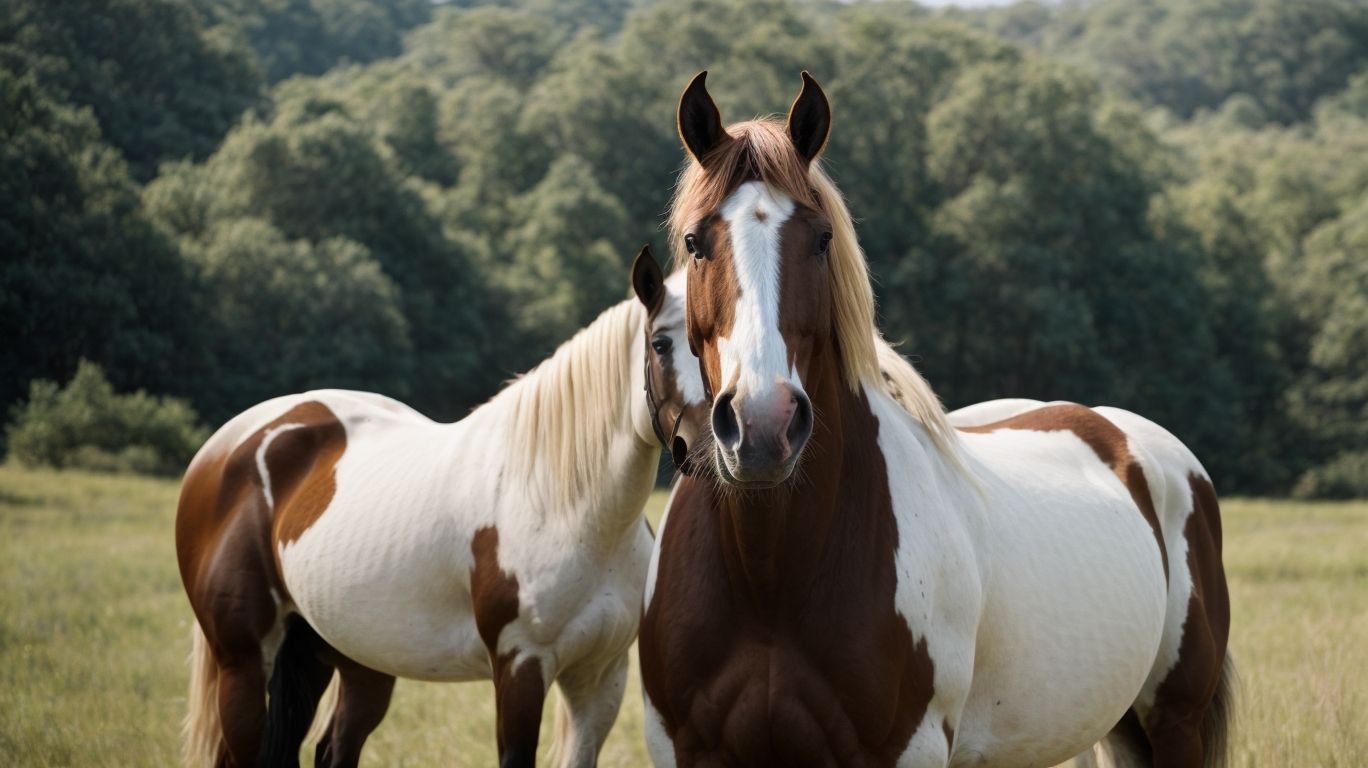
Credits: Horselife.Org – Jeremy Martinez
Both Hanoverian and Paint Horses share common traits of athleticism, versatility, and even-natured temperaments, reflecting their rich histories as selectively bred horse breeds renowned for their performance and adaptability.
These breeds are known for excelling in various equine disciplines, from dressage and show jumping to trail riding and ranch work. Their strong, muscular builds and graceful movements make them well-suited for demanding athletic activities. Their calm and composed dispositions make them suitable for riders of all levels, whether in the competitive arena or on leisurely trails.
Both are Popular Breeds of Horses
The Hanoverian and Paint Horses are esteemed as popular and registered horse breeds, with the American Hanoverian Society playing a pivotal role in the registration and preservation of the Hanoverian breed’s lineage and standards.
The Hanoverian Horse, known for its athleticism, intelligence, and elegant appearance, has garnered widespread popularity among equestrians and enthusiasts. The American Hanoverian Society has been instrumental in maintaining high breed standards, ensuring that Hanoverians excel not only in show rings but also in various equestrian disciplines. Through meticulous registration processes and breed preservation efforts, the Society has significantly contributed to the breed’s long-term viability and reputation across North America.
Similarly, the distinctive patterns and colors of Paint Horses have made them a favored choice among riders, and their registration with the American Paint Horse Association provides a mark of authenticity and pedigree, ensuring the preservation of their unique characteristics and lineage.
Both are Known for their Athleticism and Versatility
Both Hanoverian and Paint Horses are renowned for their exceptional athleticism and versatility, making them sought-after choices for various riding disciplines and equestrian activities due to their adaptability and performance capabilities.
With their strong, powerful build and graceful movement, Hanoverian horses have established themselves as top contenders in dressage and show jumping, showcasing their remarkable agility and elegance in these demanding competitions.
Paint Horses, on the other hand, are prized for their striking coat patterns and natural aptitude for Western disciplines such as reining and cutting. Their inherent athleticism and keen intelligence enable them to excel in ranch work and rodeo events, further cementing their place in the world of equestrian sports.
Both Have a History of Being Bred for Specific Purposes
The histories of Hanoverian and Paint Horses are marked by dedicated selective breeding efforts aimed at refining their conformation, agility, and performance, leading to the establishment of distinct breed registries to ensure the preservation of their respective lineages and standards.
This historical emphasis on selective breeding has been instrumental in shaping the distinctive attributes of Hanoverian and Paint Horses. The meticulous selection of desirable traits, such as strength, elegance, and athleticism, has contributed to the refinement of these breeds, making them sought after for various disciplines.
The establishment of breed registries has played a crucial role in maintaining the integrity of breed standards and bloodlines. By meticulously documenting pedigrees and performance records, these registries have provided a framework for evaluating and preserving the lineage and qualities of Hanoverian and Paint Horses.
What are the Differences between Paint and Hanoverian Horses?
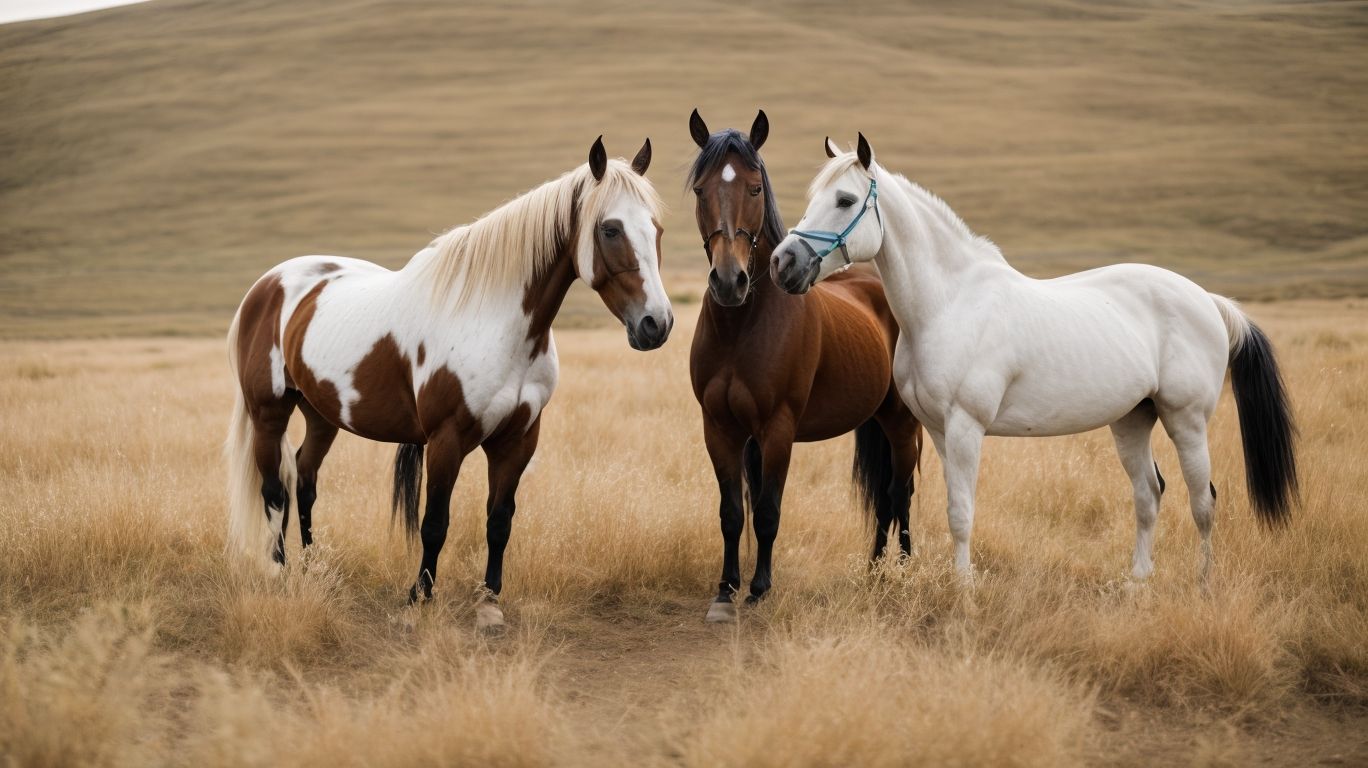
Credits: Horselife.Org – Alexander Williams
The distinctions between Paint and Hanoverian horses encompass variations in coat color, body type, temperament, and their specific uses across different equestrian disciplines, highlighting the unique traits and roles of each breed.
Paint horses, known for their flashy two-toned coat patterns, often have a distinctive combination of white and another color such as black, bay, or chestnut. In contrast, Hanoverian horses have solid coat colors, commonly chestnut, bay, or black, reflecting the breed’s traditional focus on uniformity.
Paint horses typically exhibit a stockier build with muscular bodies, suited for western disciplines, while Hanoverians are known for their elegant, refined conformation, making them well-suited for dressage and show jumping.
Paint horses are prized for their friendly and sociable temperament, making them popular choices for pleasure riding and ranch work. On the other hand, Hanoverians are recognized for their impeccable trainability, grace, and competitive spirit, making them ideal for high-level dressage and jumping competitions.
These differences in coat color, body type, temperament, and utilization reflect the distinct characteristics and purposes of Paint and Hanoverian horses across the diverse equestrian landscape.
Coat Color and Markings
One of the primary distinctions between Paint and Hanoverian horses lies in their coat color and distinct markings, serving as prominent breed characteristics that differentiate the two breeds visually and historically.
The Paint horse, known for its distinctive pinto coat pattern, typically displays a combination of large white patches and darker coat colors, such as bay, black, or chestnut. This classic coat pattern has been historically celebrated, dating back to the Native American horses that exhibited similar colorations.
On the other hand, the Hanoverian breed is commonly recognized for its solid coat colors, such as bay, chestnut, gray, and black, often devoid of complex markings. These coat color and marking distinctions have deep roots in the historical development of the two breeds, reflecting their unique genetic compositions and cultural significance.
Body Type and Conformation
The body type and conformation of Paint and Hanoverian horses exhibit distinct variations, reflecting the breed-specific standards and registration criteria that define their physical attributes and structural qualities.
Paint horses are known for their distinctive coat patterns, with a specific emphasis on a combination of white and any other color, whereas Hanoverian horses typically have solid colors such as black, bay, brown, or chestnut.
Paint horses often display a stockier build with strong, muscular hindquarters, reflecting their foundation in the Quarter Horse and Thoroughbred breeds, while Hanoverians exhibit a more refined and elegant conformation, characterized by a well-defined sloping shoulder, strong hindquarters, and an overall appearance of athleticism.
The conformation standards for Paint horses emphasize the balanced proportions, strong bones, and a refined head with a broad forehead, while Hanoverians are expected to have a noble head, well-set neck, and a longer, sloping shoulder that contributes to their graceful movement.
Temperament and Trainability
Paint and Hanoverian horses exhibit contrasting temperaments and trainability, influencing their suitability for specific disciplines and performance expectations, reflecting the breed-specific behavioral traits and disposition towards training and handling.
Paint horses are known for their intelligent and friendly nature, making them highly adaptable to various disciplines. They often excel in events such as barrel racing, western pleasure, and ranch sorting due to their agility and willingness to work closely with their handlers. Their lively and energetic temperament demands consistent and patient training methods, which can lead to impressive results in the show ring.
In contrast, Hanoverian horses are recognized for their exceptional work ethic and strong-willed nature. Their calm and composed disposition makes them well-suited for dressage, show jumping, and eventing. Their trainable and focused attitude allows for precise and intricate movements that are essential in high-level competitions.
Uses and Disciplines
The uses and participation of Paint and Hanoverian horses in various riding disciplines and equestrian competitions reveal distinct preferences and strengths that align with their breed-specific traits and performance capabilities, influencing their roles in different equestrian activities.
Paint horses, known for their unique coat pattern, are favored in western riding disciplines such as barrel racing and reining due to their agility, speed, and natural cow sense, making them ideal for tasks requiring quick maneuvers and athleticism.
On the other hand, Hanoverian horses, with their elegant build and impressive movement, excel in dressage and show jumping, excelling in the precision and grace demanded by these disciplines.
Which Horse Breed is Right for You?
Selecting the right horse breed, whether a Hanoverian or Paint Horse, hinges on understanding their respective temperaments, strengths, and competitive suitability, ensuring an informed choice aligning with individual riding goals and preferences.
When debating between a Hanoverian and a Paint Horse, it’s crucial to acknowledge that the Hanoverian breed is renowned for its exceptional temperament and athleticism, making them ideal for dressage and show jumping. On the other hand, Paint Horses are recognized for their versatility and strength, excelling in western riding disciplines and ranch work.
Consider your riding goals and preferences – are you aiming for refined precision and elegance, or are you inclined towards the rugged, dynamic nature of western riding? Evaluating how these breeds’ strengths align with your aspirations will guide you towards the breed that best complements your riding style and objectives.
Conclusion
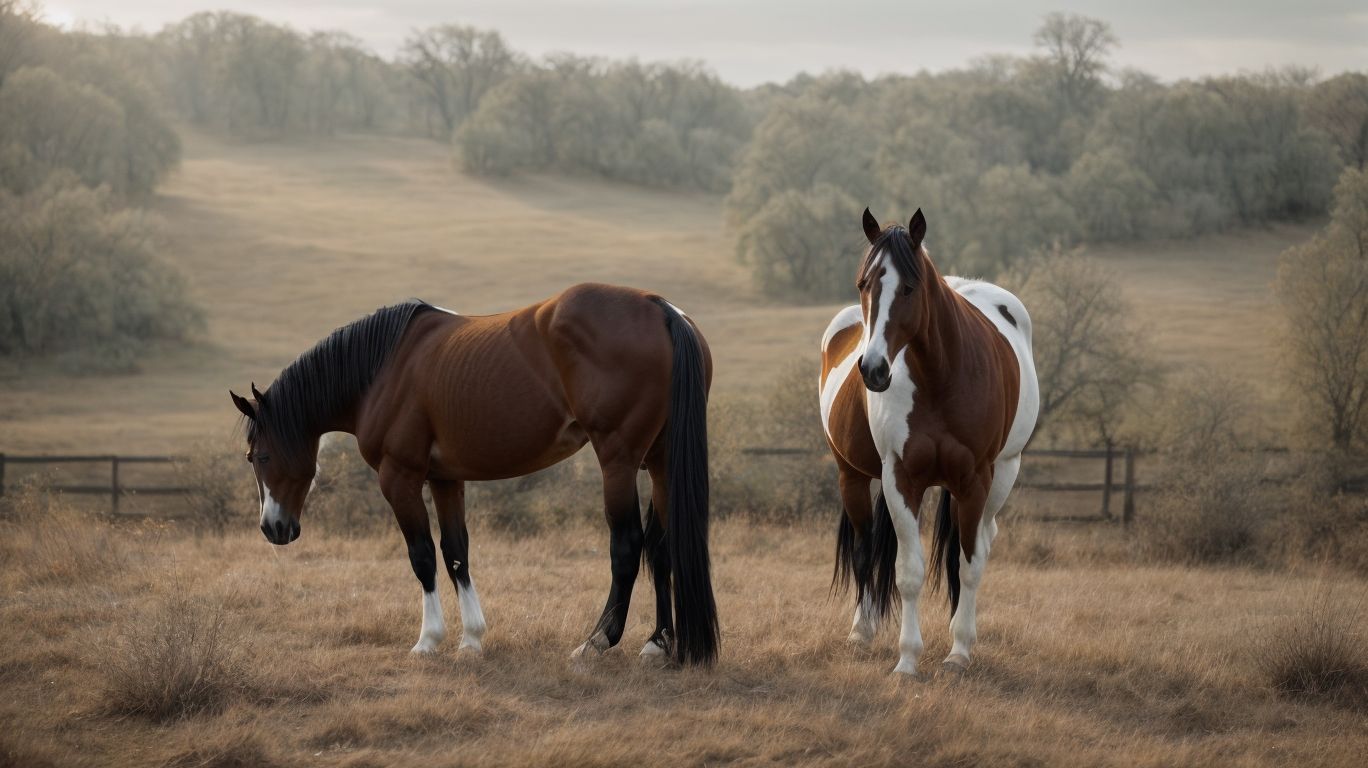
Credits: Horselife.Org – Roy Flores
The distinctions and similarities between Hanoverian and Paint Horses underscore their unique contributions to the equestrian world, with each breed offering distinct athletic prowess, temperament, and versatility that cater to diverse riding disciplines and individual preferences.
Both the Hanoverian and Paint Horses are renowned for their exceptional athleticism and versatility, making them highly sought after in the equestrian community. The Hanoverian breed is recognized for its elegance, power, and grace, excelling in disciplines such as dressage and show jumping. On the other hand, Paint Horses are celebrated for their striking coat patterns and innate agility, excelling particularly in western riding disciplines, including reining and cutting.
One of the shared attributes of these equine breeds is their remarkable temperament, known for their gentle nature and strong work ethic, making them suitable companions for riders of various skill levels. Their adaptability allows them to thrive in different environments and equestrian pursuits, making them valuable assets in competitive sports, leisure riding, and ranch work.
Frequently Asked Questions
What are the main differences between a Paint and Hanoverian horse?
A Paint horse, also known as a Painted horse, is a breed that is characterized by its distinct color patterns, while a Hanoverian horse is a specific breed originating from Germany and known for its athleticism and versatility.
Do Paint horses and Hanoverian horses have different temperaments?
Yes, Paint horses tend to have a more calm and easy-going temperament, while Hanoverian horses are known for their high energy and competitive nature.
Which breed is better for riding and showing?
This depends on personal preference and the specific discipline. Paint horses excel in Western riding and showing, while Hanoverians are popular in English disciplines such as dressage and show jumping.
Can a Paint and Hanoverian horse breed together?
Yes, it is possible for a Paint and Hanoverian horse to breed and produce offspring. The resulting foal is known as a “Painoverian” or “HanoPaint” and may inherit traits from both breeds.
How do you identify a Paint horse from a Hanoverian horse?
A Paint horse can be recognized by its unique spotted or patchy coat pattern, while a Hanoverian horse is typically solid in color. Additionally, Paint horses may have a stockier build compared to the leaner Hanoverian.
Which breed is more suitable for a beginner rider?
Both Paint and Hanoverian horses can be suitable for beginner riders, but it ultimately depends on the individual horse’s temperament and training. It is important to work with a knowledgeable trainer when selecting a horse for a beginner rider.

